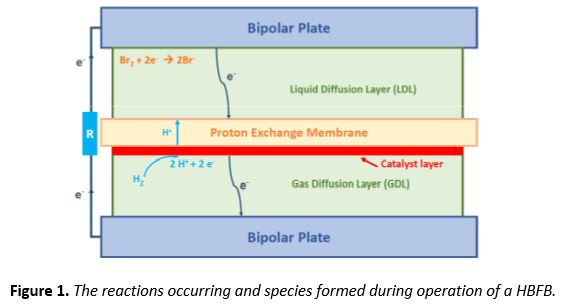The power obtained by renewable energy sources, such as solar panels and wind turbines are highly dependent on their natural causes. Due to the intermittent availability of these natural sources, a reliable storage system with high capacity is required to preserve the power output from sustainable energy devices.
Hydrogen/Bromine flow battery (HBFB) is a highly promising option for large-scale energy storage due to favorable characteristics such as very high power density, reversible reactions, low chemical costs, and fast kinetics.
Proton exchange membrane plays a significantly important role in the HBFB system. Low resistance and high selectivity are vital to achieve great performance in terms of high energy efficiency, low self-discharge, and low bromine cross-over to the hydrogen side.
In the current state of the art, PFSA (perfluorosulfonic acid) membranes are the most commonly used in HBFB systems. While PFSA shows the best trade-off between bromine cross-over and proton conductivity, its quite complex chemical structure results in high manufacturing costs. Therefor, the need for an alternative membrane material with relatively potential properties is crucial.
The aim of this project is to develop amphiphilic membranes based on cost-effective materials, such as PVDF (poly(vinylidene fluoride)), with outstanding chemical stability, mechanical strength and high proton conductivity. Material and membrane characterization methods are carried out to investigate the structure of prepared membranes and compare their performance with the commercially available membranes. At final stage, the tested membranes will be used for large-scale HBFB production.

Contact details

Name: Sanaz Abbasi
Room: STO 0.47
Email: s.abbasi1@tue.nl
Phone: +31 6 49 682515